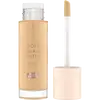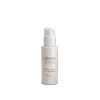What's inside
What's inside
 Key Ingredients
Key Ingredients

 Benefits
Benefits

 Concerns
Concerns

No concerns
 Ingredients Side-by-side
Ingredients Side-by-side

Water
Skin ConditioningHydrogenated Didecene
Skin ConditioningIsododecane
EmollientGlycerin
HumectantPropanediol
SolventSqualane
EmollientPolyglyceryl-4 Oleate
EmulsifyingHydrogenated Styrene/Isoprene Copolymer
Polyglyceryl-3 Polyricinoleate
EmulsifyingMagnesium Sulfate
Tocopherol
AntioxidantSynthetic Fluorphlogopite
Triethoxycaprylylsilane
Pentaerythrityl Tetra-Di-T-Butyl Hydroxyhydrocinnamate
AntioxidantPhenoxyethanol
PreservativeCI 77163
Cosmetic ColorantCI 77491
Cosmetic ColorantCI 77492
Cosmetic ColorantCI 77891
Cosmetic ColorantWater, Hydrogenated Didecene, Isododecane, Glycerin, Propanediol, Squalane, Polyglyceryl-4 Oleate, Hydrogenated Styrene/Isoprene Copolymer, Polyglyceryl-3 Polyricinoleate, Magnesium Sulfate, Tocopherol, Synthetic Fluorphlogopite, Triethoxycaprylylsilane, Pentaerythrityl Tetra-Di-T-Butyl Hydroxyhydrocinnamate, Phenoxyethanol, CI 77163, CI 77491, CI 77492, CI 77891
Water
Skin ConditioningPhenoxyethyl Caprylate
Butylene Glycol
HumectantDiethylamino Hydroxybenzoyl Hexyl Benzoate
UV FilterEthyl Oleate
EmollientEthylhexyl Triazone
UV AbsorberPhenylbenzimidazole Sulfonic Acid
UV AbsorberRubus Chamaemorus Fruit Juice Extract
HumectantCanola Oil
EmollientTromethamine
BufferingSodium Stearoyl Glutamate
CleansingEpilobium Angustifolium Extract
Skin ConditioningRubus Chamaemorus Seed Extract
Skin ConditioningPhenoxyethanol
PreservativeCetearyl Alcohol
EmollientCetyl Palmitate
EmollientHydroxyethyl Acrylate/Sodium Acryloyldimethyl Taurate Copolymer
Emulsion StabilisingHydroxyacetophenone
AntioxidantPropanediol
SolventSilica
AbrasiveTocopheryl Acetate
AntioxidantMica
Cosmetic ColorantXanthan Gum
EmulsifyingGlycerin
HumectantEthylhexylglycerin
Skin ConditioningPolysorbate 60
EmulsifyingSorbitan Isostearate
EmulsifyingPhenethyl Alcohol
MaskingSodium Carrageenan
Emulsion StabilisingAluminum Hydroxide
EmollientAlgin
MaskingMaris Sal
Skin ConditioningSodium Hydroxide
BufferingSodium Benzoate
MaskingPotassium Sorbate
PreservativeCitric Acid
BufferingLinalool
PerfumingCitronellol
PerfumingParfum
MaskingCI 77491
Cosmetic ColorantCI 77492
Cosmetic ColorantCI 77891
Cosmetic ColorantWater, Phenoxyethyl Caprylate, Butylene Glycol, Diethylamino Hydroxybenzoyl Hexyl Benzoate, Ethyl Oleate, Ethylhexyl Triazone, Phenylbenzimidazole Sulfonic Acid, Rubus Chamaemorus Fruit Juice Extract, Canola Oil, Tromethamine, Sodium Stearoyl Glutamate, Epilobium Angustifolium Extract, Rubus Chamaemorus Seed Extract, Phenoxyethanol, Cetearyl Alcohol, Cetyl Palmitate, Hydroxyethyl Acrylate/Sodium Acryloyldimethyl Taurate Copolymer, Hydroxyacetophenone, Propanediol, Silica, Tocopheryl Acetate, Mica, Xanthan Gum, Glycerin, Ethylhexylglycerin, Polysorbate 60, Sorbitan Isostearate, Phenethyl Alcohol, Sodium Carrageenan, Aluminum Hydroxide, Algin, Maris Sal, Sodium Hydroxide, Sodium Benzoate, Potassium Sorbate, Citric Acid, Linalool, Citronellol, Parfum, CI 77491, CI 77492, CI 77891
 Reviews
Reviews

Ingredients Explained
These ingredients are found in both products.
Ingredients higher up in an ingredient list are typically present in a larger amount.
Ci 77491 is also hydrated iron III oxide. It's sole purpose is to give a red/pink hue to products.
Iron III oxides are classified as inorganic chemicals for coloring.
Synthetically created Ci 77491 is considered safer than those naturally found. This is because the synthetically created version may contain less impurities. Iron oxides are generally non-toxic and non-allergenic.
Learn more about CI 77491Ci 77492 is also hydrated iron III oxide. It's sole purpose is to give a yellow hue to products.
Iron III oxides are classified as inorganic chemicals for coloring.
Synthetically created Ci 77492 is considered safer than those naturally found. This is because the synthetically created version may contain less impurities. Iron oxides are generally non-toxic and non-allergenic.
Learn more about CI 77492Ci 77891 is a white pigment from Titanium dioxide. It is naturally found in minerals such as rutile and ilmenite.
It's main function is to add a white color to cosmetics. It can also be mixed with other colors to create different shades.
Ci 77891 is commonly found in sunscreens due to its ability to block UV rays.
Learn more about CI 77891Glycerin is already naturally found in your skin. It helps moisturize and protect your skin.
A study from 2016 found glycerin to be more effective as a humectant than AHAs and hyaluronic acid.
As a humectant, it helps the skin stay hydrated by pulling moisture to your skin. The low molecular weight of glycerin allows it to pull moisture into the deeper layers of your skin.
Hydrated skin improves your skin barrier; Your skin barrier helps protect against irritants and bacteria.
Glycerin has also been found to have antimicrobial and antiviral properties. Due to these properties, glycerin is often used in wound and burn treatments.
In cosmetics, glycerin is usually derived from plants such as soybean or palm. However, it can also be sourced from animals, such as tallow or animal fat.
This ingredient is organic, colorless, odorless, and non-toxic.
Glycerin is the name for this ingredient in American English. British English uses Glycerol/Glycerine.
Learn more about GlycerinPhenoxyethanol is a preservative that has germicide, antimicrobial, and aromatic properties. Studies show that phenoxyethanol can prevent microbial growth. By itself, it has a scent that is similar to that of a rose.
It's often used in formulations along with Caprylyl Glycol to preserve the shelf life of products.
Propanediol is an all-star ingredient. It softens, hydrates, and smooths the skin.
It’s often used to:
Propanediol is not likely to cause sensitivity and considered safe to use. It is derived from corn or petroleum with a clear color and no scent.
Learn more about PropanediolWater. It's the most common cosmetic ingredient of all. You'll usually see it at the top of ingredient lists, meaning that it makes up the largest part of the product.
So why is it so popular? Water most often acts as a solvent - this means that it helps dissolve other ingredients into the formulation.
You'll also recognize water as that liquid we all need to stay alive. If you see this, drink a glass of water. Stay hydrated!
Learn more about Water